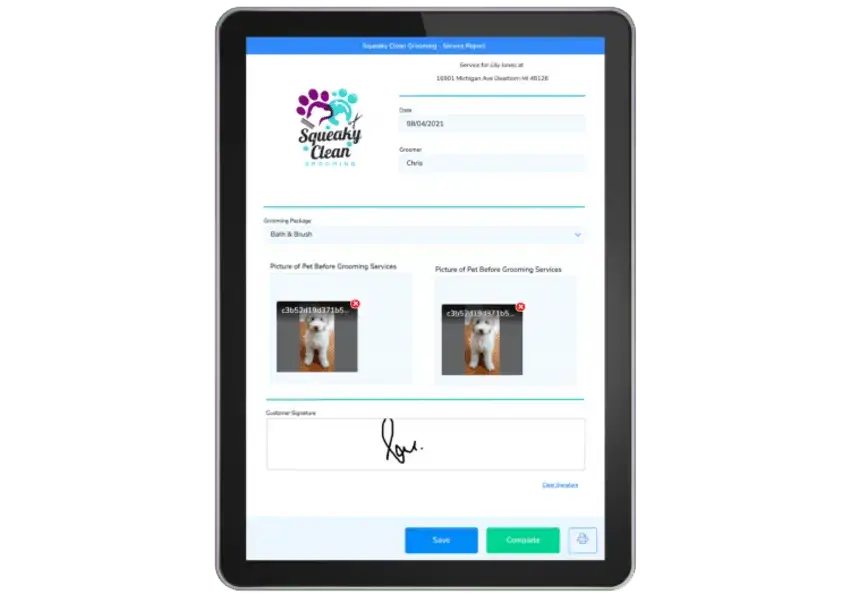
In a world propelled by digital transformation, the winds of change are sweeping through the realm of service businesses. The days of cumbersome paperwork and manual processes are fading into a stupor as companies embrace the power of automated processes with digital forms.
This transition has been driven by the advent of digital forms and workflow automation, offering a myriad of benefits such as improved efficiency, cost savings, and enhanced customer satisfaction.
Join Arrivy in this transformative journey toward paperless field service management, and explore how paperless systems are revolutionizing operations and elevating customer satisfaction to unprecedented heights.
In this blog, we will try to provide an understanding of the future of service excellence, where technology and innovation converge to redefine the way businesses operate in the field.
Challenges of Traditional Paper Forms in Field Service Management
In the realm of field management, traditional paper forms have long been a staple. However, they come with a myriad of challenges that hinder operational efficiency and productivity. Let’s delve into some of these challenges:
Time-consuming data entry
Manual data entry processes associated with paper forms can be extremely time-consuming. Field technicians often spend valuable time filling out forms by hand, which can lead to delays in service delivery and increased labor costs.
Risk of errors and misplacement
The reliance on paper forms poses a significant risk of errors and misplacement. Illegible handwriting, transcription mistakes, and lost or damaged forms can result in inaccurate data and operational inefficiencies.
Limited accessibility and mobility
Paper forms are inherently limited in terms of accessibility and mobility. Field technicians must carry physical forms with them, which can be cumbersome and impractical, especially in remote or challenging environments. This limitation can impede real-time communication and decision-making.
Environmental impact of paper usage
The environmental impact of paper usage cannot be overlooked. The production, transportation, and disposal of paper forms contribute to deforestation, greenhouse gas emissions, and waste generation.
Moreover, the reliance on paper forms perpetuates a culture of resource consumption that is unsustainable in the long run. Addressing these challenges requires a shift towards digital solutions that offer greater efficiency, accuracy, and sustainability.
By embracing digital forms and workflow automation, Arrivy is helping field service businesses to overcome the limitations of traditional paper-based processes and pave the way for a more streamlined and environmentally conscious future.
Embracing the Digital Revolution
Gone are the days of cumbersome paper forms and manual processes. With the proliferation of digital technologies, software companies are providing opportunities to service businesses to streamline their operations through the adoption of digital forms.
These paperless forms not only eliminate the need for physical paperwork but also provide a more efficient and accurate way of capturing and processing information.
How to Digitize Forms
Transitioning from traditional paper forms to digital ones may seem daunting at first, but the benefits far outweigh the initial effort. Here are some steps to help you digitize your forms effectively:
Identify Your Needs
Assess the types of forms currently used in your field service operations and prioritize them based on importance and frequency of use.
Choose the Right Tools
Select an efficient field service management software that offers robust digital form capabilities and integrates seamlessly with your existing systems.
Design User-Friendly Forms
Create digital forms that are intuitive and easy to navigate, ensuring that field technicians can quickly input relevant data while on-site.
Implement Workflow Automation
Leverage automation features to streamline form submission, approval processes, and data routing, reducing manual intervention and minimizing errors.
Train Your Team
Provide comprehensive training to your field staff on how to use the new digital forms effectively, emphasizing the benefits and efficiencies they offer.
Unlocking the Benefits of Paperless Forms
The adoption of digital forms in field operations brings a multitude of advantages to businesses:
Time and Cost Savings
By eliminating the need for paper-based processes, companies can save valuable time and resources associated with printing, storing, and transporting physical forms.
Streamlined Workflows
Paperless validation software enables seamless data capture and transfer, facilitating smoother communication between field technicians, dispatchers, and customers.
Paperless Reporting
With real-time access to computerized forms and data, businesses can generate instant reports, track performance metrics, and gain valuable insights into their operations.
Improved Inventory Management
Mobile forms allow for accurate tracking of inventory levels, reducing the risk of stockouts and improving inventory turnover rates.
Enhanced Customer Satisfaction
By digitizing forms and automating processes, businesses can provide faster response times, proactive service, and a more personalized customer experience.
Leveraging Technology for Greater Efficiency
In the field of efficiency, Arrivy’s cloud-based solutions play a crucial role in enabling paperless field operations to service businesses. By leveraging the power of the cloud, businesses can access their data from anywhere, at any time, using any device.
This flexibility enhances collaboration and communication and also ensures data security and compliance with industry regulations. Furthermore, integrating digital forms with existing systems such as work order management software and inventory management systems.
Enhances data accuracy and consistency across the organization. This integration streamlines workflows, reduces manual errors, and enables companies to make informed decisions based on real-time insights.
The Future of Field Service Management
As technology continues to evolve, the possibilities for paperless reporting are endless. From advanced data analytics and predictive maintenance to IoT-enabled devices and augmented reality, the future promises even greater efficiency, productivity, and customer satisfaction.
Conclusion
The adoption of digital order form is not just about going paperless; it’s about embracing innovation and leveraging technology to drive operational excellence. By utilizing digital forms to accelerate the work for paperless field service management, software companies can unlock significant time and cost savings, streamline their operations, and deliver exceptional experiences to their customers.
With the right tools and strategies in place, the transition to paperless field service management is not only achievable but also essential for staying competitive in today’s dynamic business landscape.
